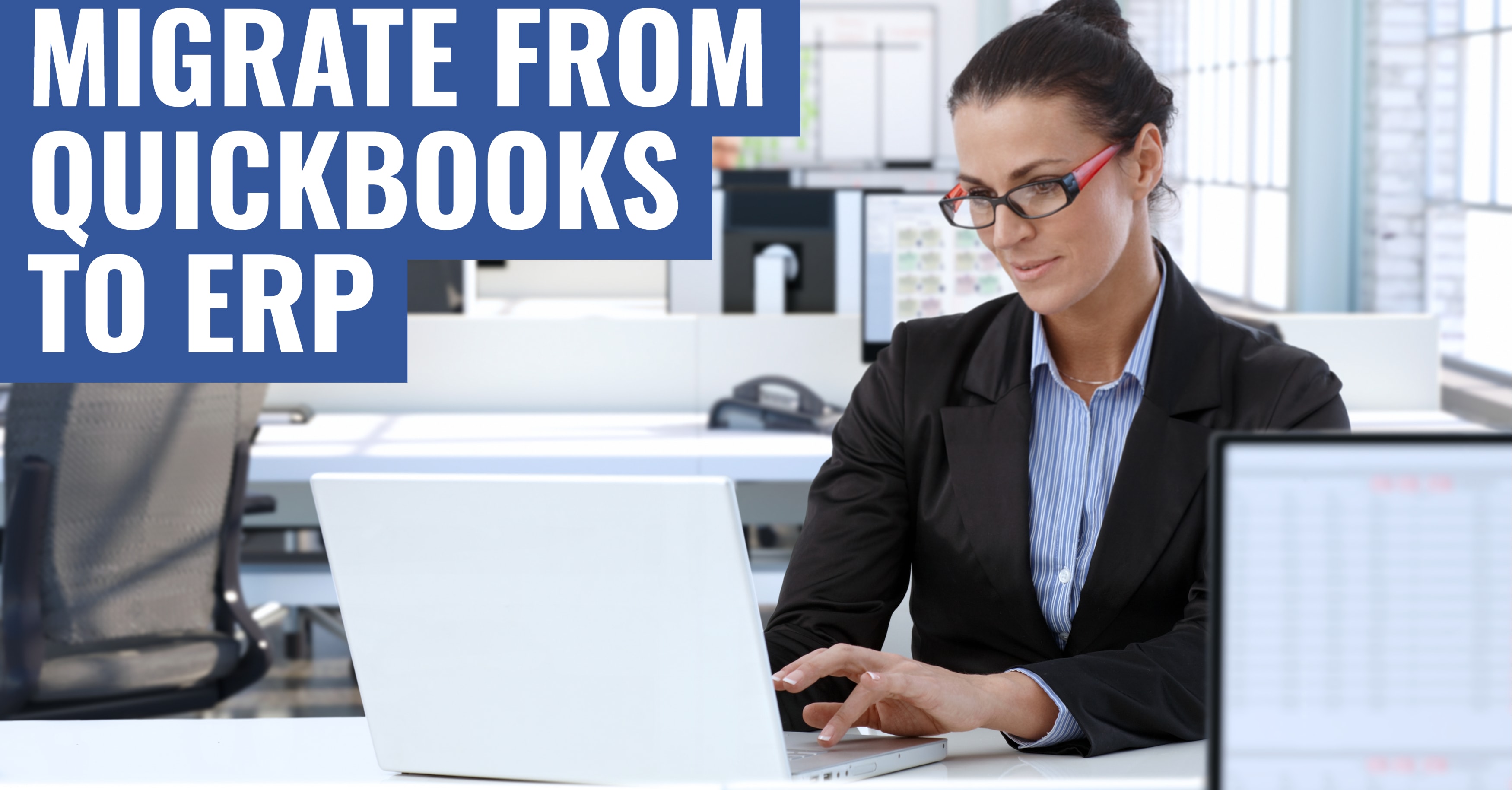3 Tips for Migrating from QuickBooks
QuickBooks has long served as a reliable accounting software for small businesses, but when these companies start to transition into the midsize category, they experience some problems. The rigidity and limited scalability of QuickBooks make it a poor fit for a growing company. If you require spreadsheets and additional applications to get things done and notice slow response times, then your QuickBooks system has passed its expiration date. You’re now ready for enterprise resource planning (ERP) software.
ERP software far exceeds QuickBooks in every way, offering comprehensive functionality, agility and scalability to support business growth. However, because the systems are so different, the migration from QuickBooks to ERP must be executed carefully. Below, we provide three tips to help you successfully move on from QuickBooks.
1. Clean Data
QuickBooks applications are often riddled with irrelevant worksheets, duplicate data entries and errors. Once users exceed file size limits in QuickBooks, they begin relying on Excel spreadsheets. One study found that 88% of spreadsheets with 150 or more rows contained errors. Transporting all this faulty information from your existing files and platforms into your ERP solution renders your investment worthless. No matter how sophisticated your new ERP system is, missing data and incorrect entries will detriment the integrity of your reports, hurt your compliance efforts and lead to poor decision making.
That’s why a thorough data cleanse is an essential part of your migration. Get rid of outdated information and duplicate records, and check that fields are consistent and organized. Involve department heads in the process to ensure you aren’t eradicating essential datasets. Anything that could be of use down the line but isn’t mission critical can be archived to streamline the process. Additionally, take advantage of any import templates and data cleansing tools available in your ERP solution to help you scrub and validate information. With your data successfully synced into your new software, you can automate data processing and reduce manual entries to uphold ERP data integrity.
2. Consider New Functionality
With your ERP solution, you’ll enjoy a wide range of functionality. For example, QuickBooks offers little flexibility in accounting segmentation, while ERP delivers comprehensive account segmentation. ERP also far surpasses QuickBook’s rudimentary inventory management by including costing, cycle counting and extensive tracking. However, these added capabilities mean you can’t simply transport your workflows and reports in their current state directly into your new system.
To avoid any issues when migrating to your ERP software, thoroughly define your requirements. Undergo business process modeling to uncover inefficiencies and redesign workflows to smooth over these pain points. Define which processes and configurations will be needed from your ERP system, and figure out which new software capabilities to incorporate into your business practices. With optimized workflows mapped into your solution and a plan that takes advantage of greater reporting flexibility and deeper insights, you’ll be able to maximize the value of your ERP functionality.
3. Create a Change Management Plan
This new functionality is exciting, but it also makes the move from QuickBooks to ERP a substantial change. Though you should be able to configure your software to align with several of your business processes, you’ll definitely need to make some modifications to your workflows and reporting strategies to comply with the system. As we all know, old habits die hard, and your workforce might have a tough time transitioning from their familiar operations in QuickBooks to their new and improved ERP tasks.
This is where change management comes in. A change management strategy is designed to keep end users informed about the project’s goals and progress, so nobody is blindsided when your software is deployed. Hold a meeting at the beginning of the implementation to explain the reasons behind the project and open the floor to any questions. Offer role-based training to ensure everyone knows how to utilize relevant features. Once your ERP is live, keep an eye on metrics to check that employees are using the system appropriately. Additionally, provide resources and on-going training to encourage continued learning.
Wrap Up
ERP is several steps up from QuickBooks, providing a wide array of modules and features to promote enterprise collaboration, offer 360-degree visibility and drive efficiency. Migrating to ERP is essential for any manufacturer or distributor pursuing business growth.
At Datix, we specialize in simplifying ERP implementations. An Epicor Gold Partner, Datix has executed a variety of software projects for over 20 years. With our Epicor fixed fee implementation, our certified consultants can help you transition seamlessly to ERP on a fixed timeline and budget. We’ll work with you from start to finish to transform your business through software.
Don’t let QuickBooks hold back your business. Make the move to Epicor ERP by contacting one of our experts today!
{{cta(‘770c1544-d87d-4acb-9fc4-7a25e1385094′,’justifycenter’)}}


